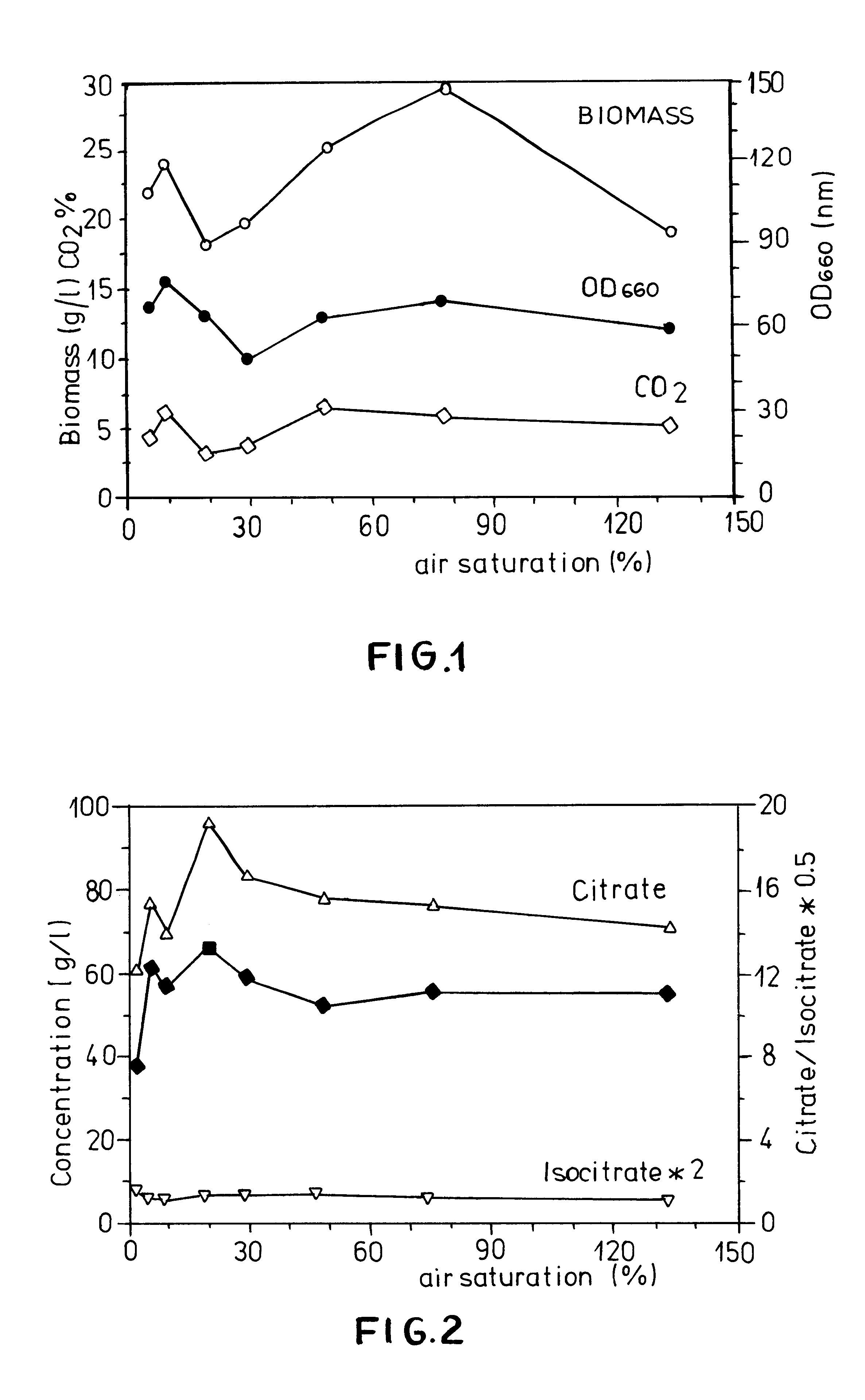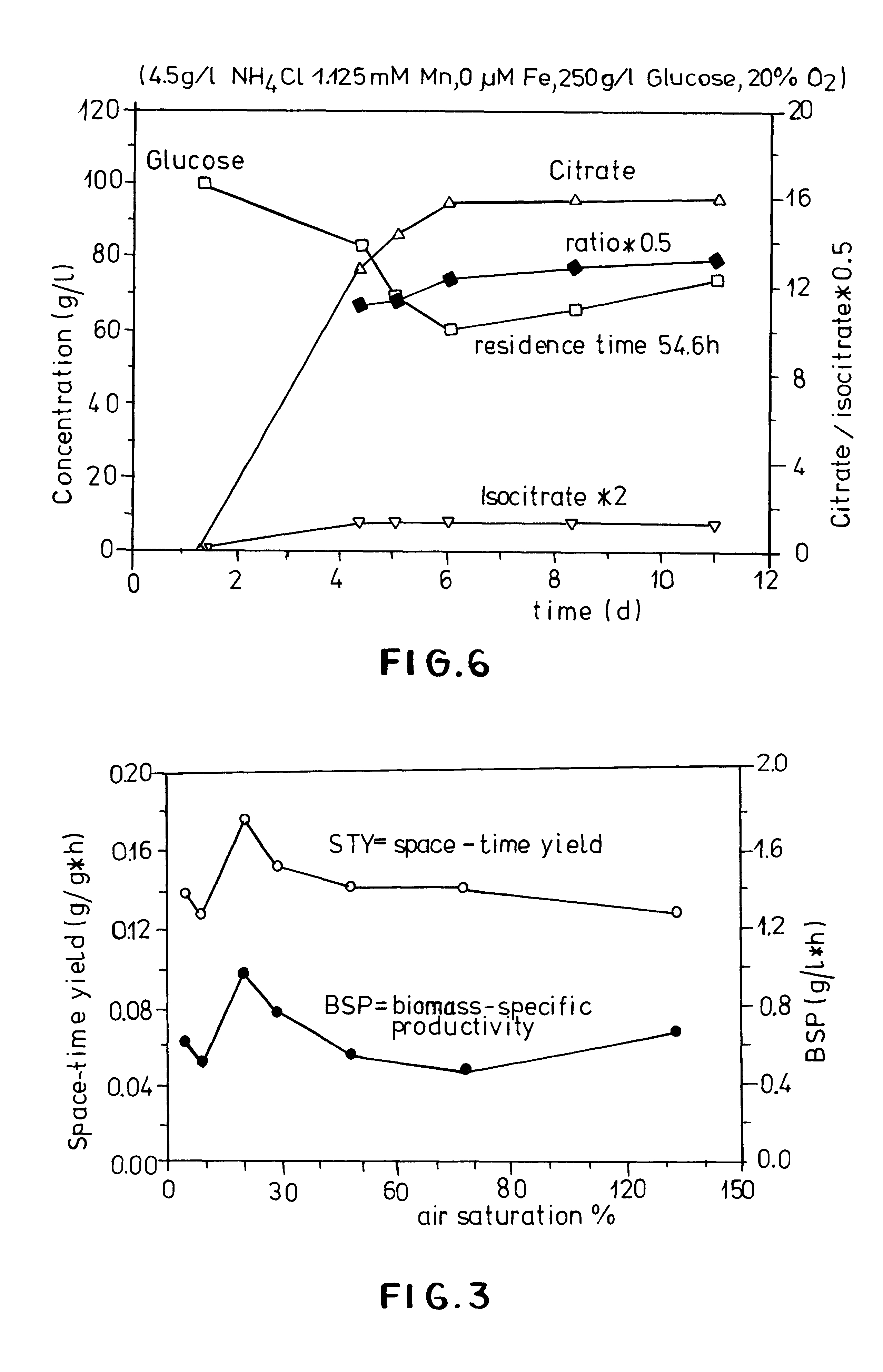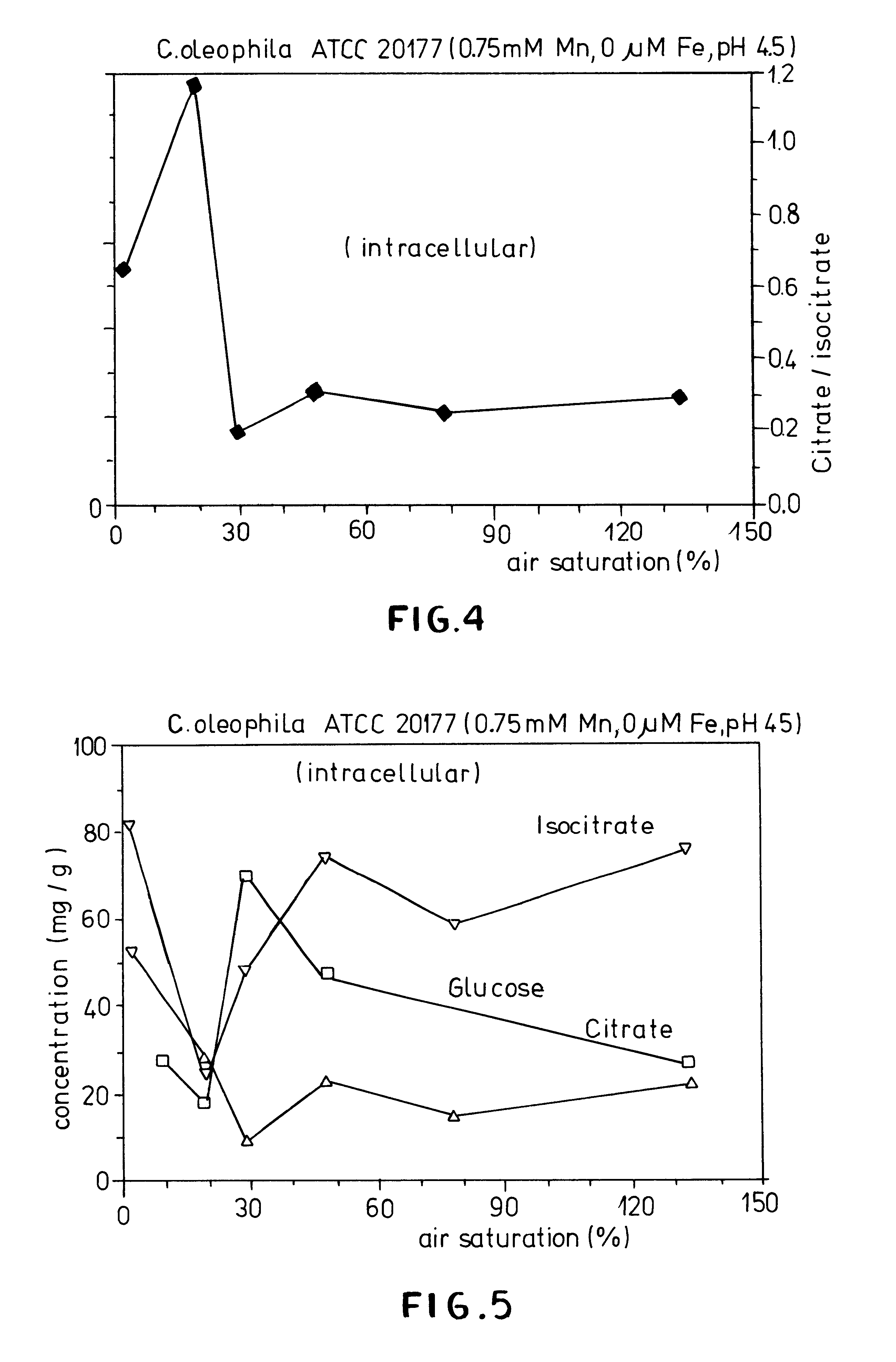Process for the continuous production of citric acid by fermentation
a technology of continuous production and citric acid, which is applied in the field of continuous production of citric acid by fermentation, can solve the problems of unpromising commercial production of residual solution, which is given by klasson et al, and arises with respect to the handling of residual solution
- Summary
- Abstract
- Description
- Claims
- Application Information
AI Technical Summary
Benefits of technology
Problems solved by technology
Method used
Image
Examples
Embodiment Construction
The Effect of O.sub.2 Saturation in the Fermenter
The curves of FIGS. 1 to 5 show the effect of oxygen saturation upon the continuous citric acid formation (in terms of citrate) with the use of Candida oleophila ATCC 20177.
The fermentation was carried out in a 2 1 agitator vessel fermenter (Biostat E, Brown & Diesel, Germany) at a pH value of 4.5. The pH value and the oxygen saturation were held constant automatically.
The composition of the fermentation medium is given in Table 1:
The investigations were carried out with continuous fermentation in chemostats with different aeration (the percentage oxygen saturation is relative to 100% air oxygen saturation at standard pressure with 1 vvm air and at 1000 rpm in pH 4,5 medium, the corresponding 100% air oxygen saturation in water under the same conditions given in air oxygen saturation in the medium of pH 3.0 of 97% and at pH 4.5 of 98.2%).
As one can see, the maximum citric acid concentration and the best citrate / isocitrate ratio is obt...
PUM
| Property | Measurement | Unit |
|---|---|---|
| Fraction | aaaaa | aaaaa |
| Time | aaaaa | aaaaa |
| Time | aaaaa | aaaaa |
Abstract
Description
Claims
Application Information
 Login to view more
Login to view more - R&D Engineer
- R&D Manager
- IP Professional
- Industry Leading Data Capabilities
- Powerful AI technology
- Patent DNA Extraction
Browse by: Latest US Patents, China's latest patents, Technical Efficacy Thesaurus, Application Domain, Technology Topic.
© 2024 PatSnap. All rights reserved.Legal|Privacy policy|Modern Slavery Act Transparency Statement|Sitemap



